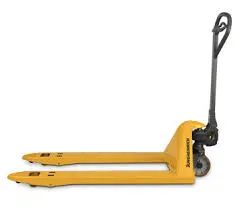


Understanding Chain Block Hoists An Essential Tool in Lifting Operations
Chain block hoists, also known simply as chain hoists, serve as essential tools in the realm of lifting and material handling. Their unique mechanism, combining robust construction with remarkable efficiency, has made them a preferred choice in various industries, including construction, manufacturing, and warehouse operations.
At their core, chain block hoists utilize a series of chains and gears to lift heavy loads with minimal effort. The primary component of a chain hoist is the chain itself, which is typically made from high-strength steel, ensuring both durability and safety when lifting substantial weights. The design includes a series of pulleys that reduce the amount of force needed to raise or lower a load, allowing operators to handle heavy items safely and efficiently.
One of the significant advantages of chain block hoists is their versatility. Available in both manual and electric models, these hoists can cater to diverse operational needs. Manual chain hoists require physical effort to operate, making them ideal for environments where power sources are limited or for tasks requiring a low lifting frequency. Conversely, electric chain hoists offer heightened efficiency and are particularly advantageous in scenarios where loads need to be lifted frequently or quickly.
The safety features integrated into modern chain block hoists also play a crucial role in their widespread adoption
. Most hoists come equipped with safety mechanisms, such as overload protection, which prevents lifting beyond the designated capacity, thereby reducing the risk of equipment failure. Additionally, the use of high-quality materials ensures that the hoists can endure the stresses of continual use, providing assurance to operators concerning load security.
In industries where heavy lifting is a regular occurrence, maintaining equipment is vital. Chain block hoists require routine inspection and maintenance to ensure optimal performance and safety. Regular checks should include examining the chain for wear and tear, ensuring that hooks are secure and free from deformation, and verifying that all moving parts are functioning correctly. By adhering to a robust maintenance schedule, the lifespan of a chain hoist can be significantly extended, reducing costs associated with frequent replacements or repairs.
Training on the proper use of chain block hoists is equally important. Operators should be well-versed in load balancing, lifting techniques, and emergency procedures to mitigate risks while operating the hoist. Many organizations establish training programs to educate their workforce on safe practices, emphasizing the importance of following manufacturers' guidelines and adhering to safety regulations.
The economic impact of using chain block hoists cannot be understated. By significantly reducing the manual labor required for lifting tasks, these devices enhance overall productivity. This efficiency translates to time savings, which can ultimately lead to lower operational costs. As businesses continue to seek ways to streamline their processes, chain block hoists remain a valuable investment.
Furthermore, the environmental impact of employing chain block hoists should also be considered. By minimizing the need for larger machinery or excessive manpower, companies can reduce their carbon footprint. This aligns with the growing emphasis on sustainable practices within industries around the world.
In conclusion, chain block hoists are indispensable tools in lifting operations, providing a combination of safety, efficiency, and versatility. Their design caters to a variety of lifting needs, making them suitable for numerous applications across different sectors. As businesses continue to prioritize efficiency and sustainability, the role of chain block hoists will undoubtedly remain pivotal in modern industry practices. With a focus on proper training and maintenance, these tools will continue to enhance lifting operations and contribute to safer, more productive work environments.



